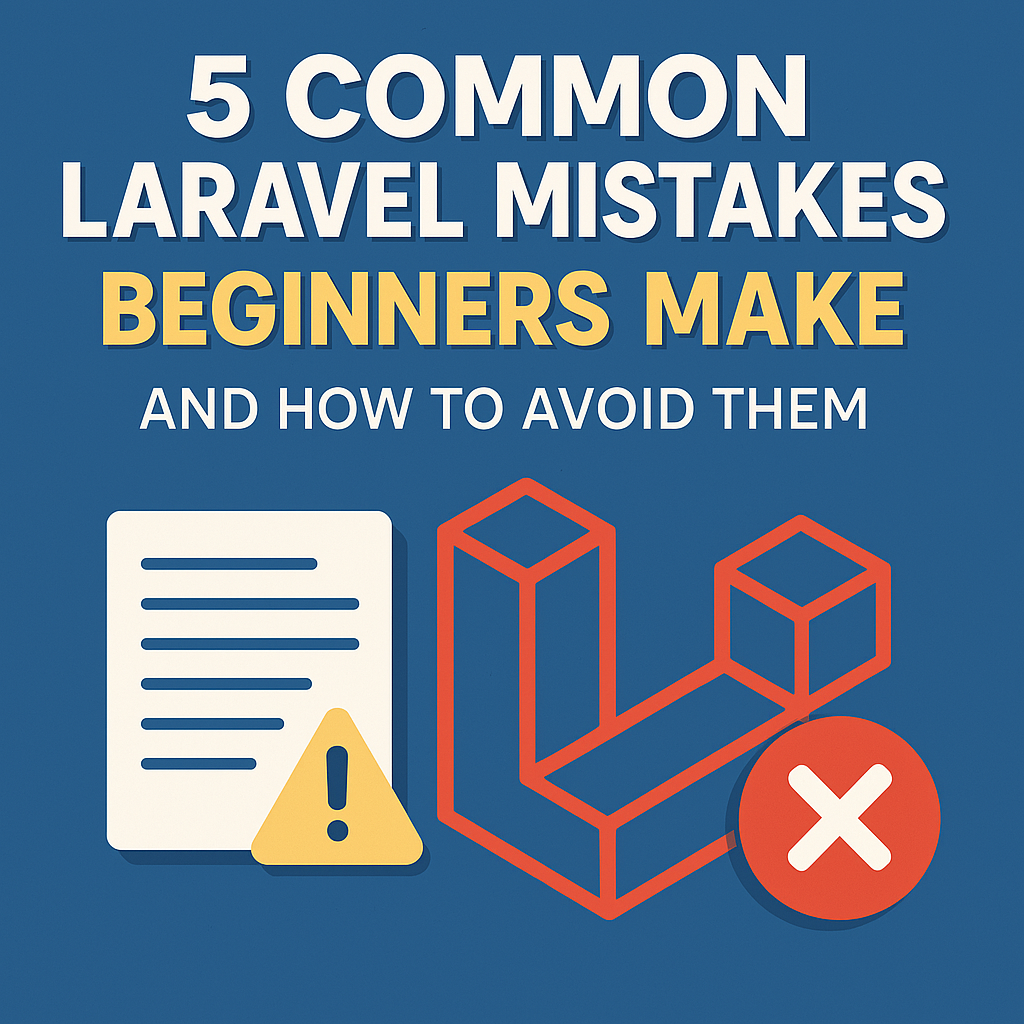Getting Started with Laravel 12 Folio: Powering Your Admin Panel with Page-Based Routing

Kritim Yantra
Jul 04, 2025
Imagine you're working late, trying to add yet another route for your admin dashboard. It feels repetitive. You're writing boilerplate code just to show a Blade view. What if Laravel could do that for you—automatically?
That's exactly what Laravel Folio in version 12 brings to the table: a page-based routing system that removes the need for manually defining routes. It's like having Laravel "watch" your folders and auto-magically create the routes you need.
If you're managing an admin panel, Folio can speed up your development process, reduce clutter, and make everything easier to maintain. Let’s dive into how you can implement it in your Laravel backend admin panel, even if you're just starting out.
🔍 What is Laravel Folio?
In simple terms, Folio lets you define routes using file names instead of code.
Create a Blade file like users.blade.php, and boom! Laravel now serves it at /users — no need to touch web.php or create a controller.
It's heavily inspired by modern frameworks like Next.js and Nuxt.
📆 Step-by-Step Guide: Implementing Laravel Folio in the Admin Panel
✅ Step 1: Install Laravel Folio
Open your terminal and run:
composer require laravel/folio
php artisan folio:install
This sets up a new folder: resources/views/pages. Any Blade files you put here will be served as pages.
🔨 Step 2: Create a Custom Folder for Admin Routes
You don't want admin pages mixed with your public ones. Let's isolate them.
Create a new folder:
mkdir resources/views/pages/admin
Now update routes/folio.php (automatically created during installation):
use Laravel\Folio\Folio;
Folio::path(resource_path('views/pages/admin'))
->uri('/admin')
->middleware(['auth', 'admin']);
What this does:
- Any Blade file inside
pages/adminwill be served at/admin/... - It protects your routes with
authandadminmiddleware.
📑 Step 3: Add Your First Admin Page
Create a file:
resources/views/pages/admin/dashboard.blade.php
Inside the file:
<x-layout>
<h1>Welcome to the Admin Dashboard</h1>
</x-layout>
Visit /admin/dashboard in your browser. Done! You just created a route and a page without writing a controller or defining anything in web.php.
🤔 Step 4: Dynamic Pages with Parameters
Let’s say you want to show user details at /admin/users/{id}.
Create a file:
resources/views/pages/admin/users/[id].blade.php
Add logic:
<?php
use App\Models\User;
use function Laravel\Folio\render;
render(function ($view, $id) {
return $view->with('user', User::findOrFail($id));
});
?>
<x-layout>
<h2>User: {{ $user->name }}</h2>
</x-layout>
Laravel will automatically bind {id} to your route and fetch the correct user.
🔗 Why Use Folio for Admin Panels?
- ✨ Cleaner Codebase — No more clutter in
web.php. - 🚀 Faster Development — Just create a file to create a page.
- 🔐 Scoped Middleware — Secure admin routes easily.
- ⚙️ Model Binding — Works with route model binding out of the box.
- 🙈 No Controller Boilerplate — Especially helpful for one-off pages.
📆 Real-Life Example: Managing Products
Want an admin page for viewing products? Create:
resources/views/pages/admin/products/index.blade.php
<?php
use App\Models\Product;
use function Laravel\Folio\render;
render(function ($view) {
return $view->with('products', Product::all());
});
?>
<x-layout>
<h1>All Products</h1>
<ul>
@foreach($products as $product)
<li>{{ $product->name }} - ${{ $product->price }}</li>
@endforeach
</ul>
</x-layout>
Done! Product list page, no controller needed.
🚫 Limitations to Keep in Mind
- Not ideal for APIs or highly dynamic logic.
- You may still want traditional routes/controllers for complex logic.
- Be cautious when using too many dynamic route segments — can get messy.
📅 Conclusion: Folio is Your Admin Panel's New Best Friend
Laravel 12 Folio isn't just a shiny new tool—it's a game-changer for developers who want to build fast, clean, and secure admin panels with less code.
By using a page-based approach, you keep your routes organized, your middleware scoped, and your brain happy.
So go ahead:
- Install Folio
- Set up your
admin/pages - And build that dashboard you’ve been putting off!
✉️ Over to You!
- Have you tried Folio in your project yet?
- What part of your admin panel could benefit most from this?
Drop your thoughts in the comments or share this post with your Laravel buddies 🧡
Tags
Comments
No comments yet. Be the first to comment!
Please log in to post a comment:
Sign in with GoogleRelated Posts
 Kritim Yantra
Kritim Yantra
 Kritim Yantra
Kritim Yantra
